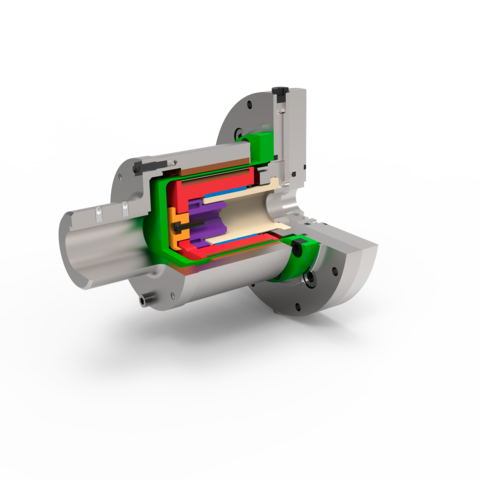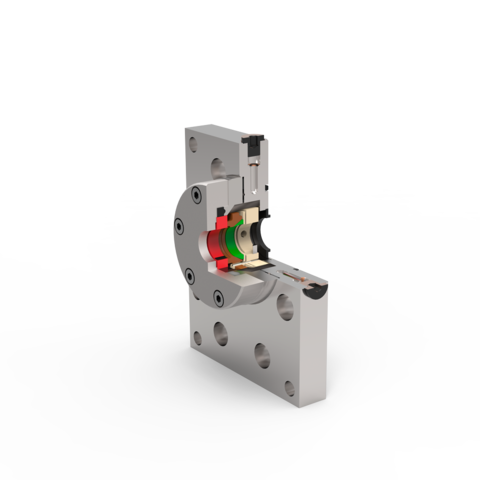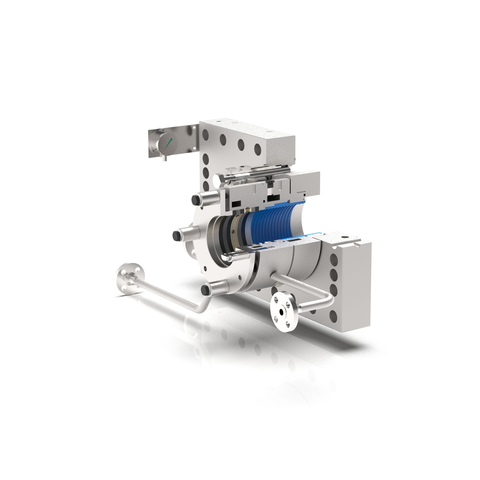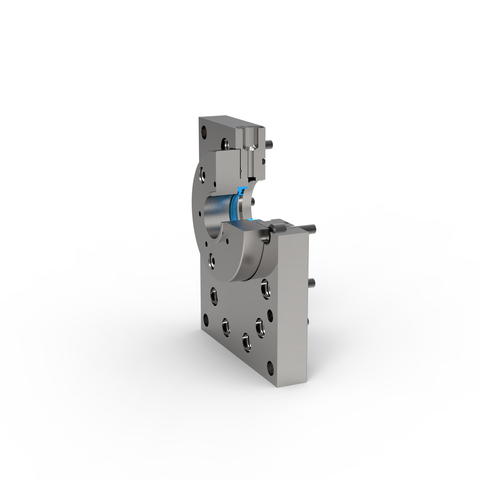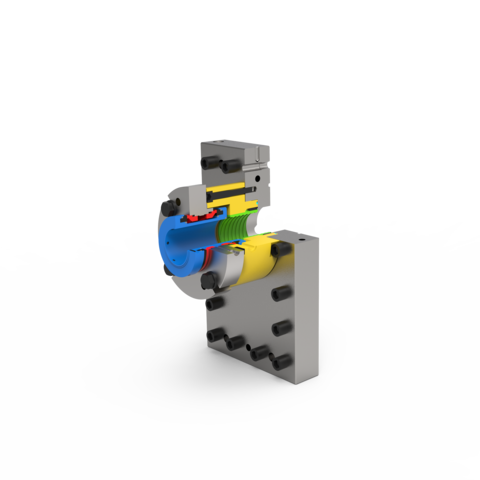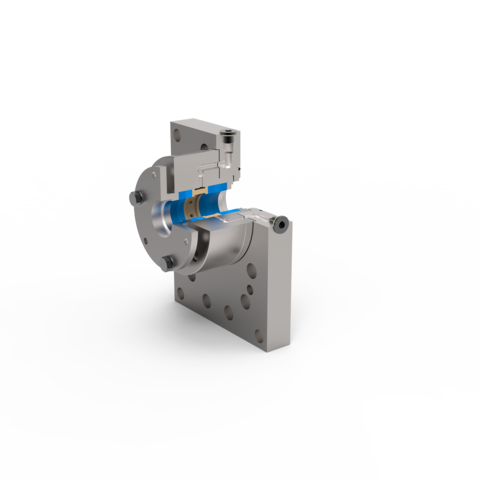Magnetic couplings
The magnetic coupling is a special form of sealing that is possible without rotating seal surfaces. That is why these are also described as “seal-less pumps”. With the magnetic coupling, the product space and atmosphere are hermetically separated from each other through static seals; the torque is not transferred through a classic shaft connection, but rather only through magnetic field coupling from the drive to the pump. The magnetic coupling works without slip (synchronous magnetic coupling). This means that the pump speed always corresponds to the drive speed as long as the maximum transferable torque is not exceeded.
This form of sealing is always recommended if an escaping of medium must be avoided under all circumstances, for example, with toxic media. Since this seal variation is maintenance-free, it is often an attractive alternative to double seals. Furthermore, they are suitable for high system pressures (up to 700 bar), because both front sides of the shaft are exposed to the suction pressure and therefore no axial powers act upon the shaft.
![[Translate to English:] Magnetkupplung](https://www.witte-pumps.com/fileadmin/_processed_/5/a/csm_011_05_CHEM_Magnetkupplung_0d7504a294.png)
